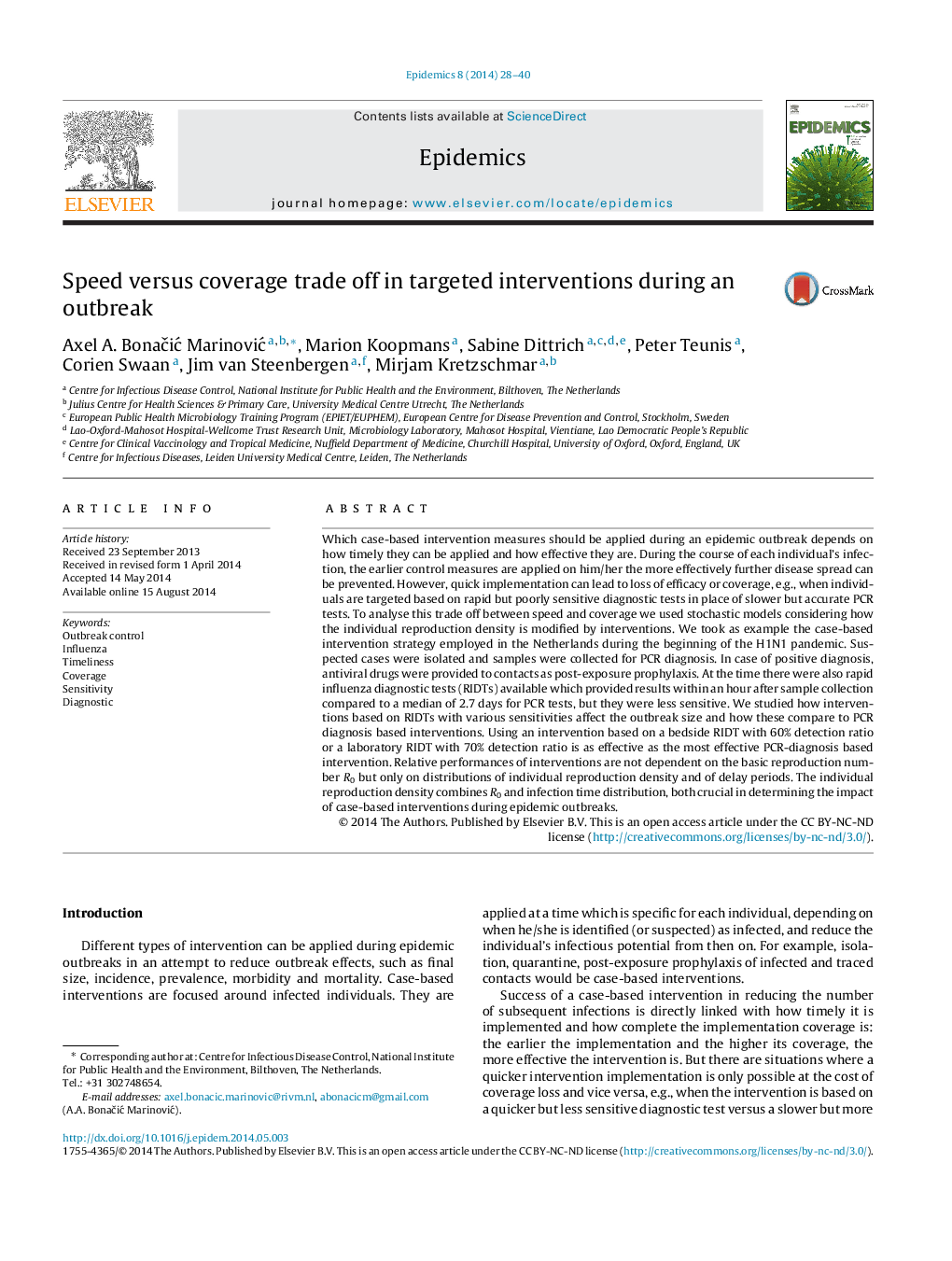| کد مقاله | کد نشریه | سال انتشار | مقاله انگلیسی | نسخه تمام متن |
|---|---|---|---|---|
| 2813568 | 1569439 | 2014 | 13 صفحه PDF | دانلود رایگان |
• We model interventions applied during the 2009 pandemic H1N1 influenza in the Netherlands.
• The model is informed using real data on sample collection and diagnosis delays.
• We compared efficacy of targeted interventions based on diagnostic tests which differ in speed and coverage/sensitivity.
• Diagnostics with lower sensitivity but a quicker result can render interventions more effective than gold standard tests.
• Not R0 but time distribution of reproduction density is the relevant parameter for comparing intervention performances.
Which case-based intervention measures should be applied during an epidemic outbreak depends on how timely they can be applied and how effective they are. During the course of each individual's infection, the earlier control measures are applied on him/her the more effectively further disease spread can be prevented. However, quick implementation can lead to loss of efficacy or coverage, e.g., when individuals are targeted based on rapid but poorly sensitive diagnostic tests in place of slower but accurate PCR tests. To analyse this trade off between speed and coverage we used stochastic models considering how the individual reproduction density is modified by interventions. We took as example the case-based intervention strategy employed in the Netherlands during the beginning of the H1N1 pandemic. Suspected cases were isolated and samples were collected for PCR diagnosis. In case of positive diagnosis, antiviral drugs were provided to contacts as post-exposure prophylaxis. At the time there were also rapid influenza diagnostic tests (RIDTs) available which provided results within an hour after sample collection compared to a median of 2.7 days for PCR tests, but they were less sensitive. We studied how interventions based on RIDTs with various sensitivities affect the outbreak size and how these compare to PCR diagnosis based interventions. Using an intervention based on a bedside RIDT with 60% detection ratio or a laboratory RIDT with 70% detection ratio is as effective as the most effective PCR-diagnosis based intervention. Relative performances of interventions are not dependent on the basic reproduction number R0 but only on distributions of individual reproduction density and of delay periods. The individual reproduction density combines R0 and infection time distribution, both crucial in determining the impact of case-based interventions during epidemic outbreaks.
Journal: Epidemics - Volume 8, September 2014, Pages 28–40
